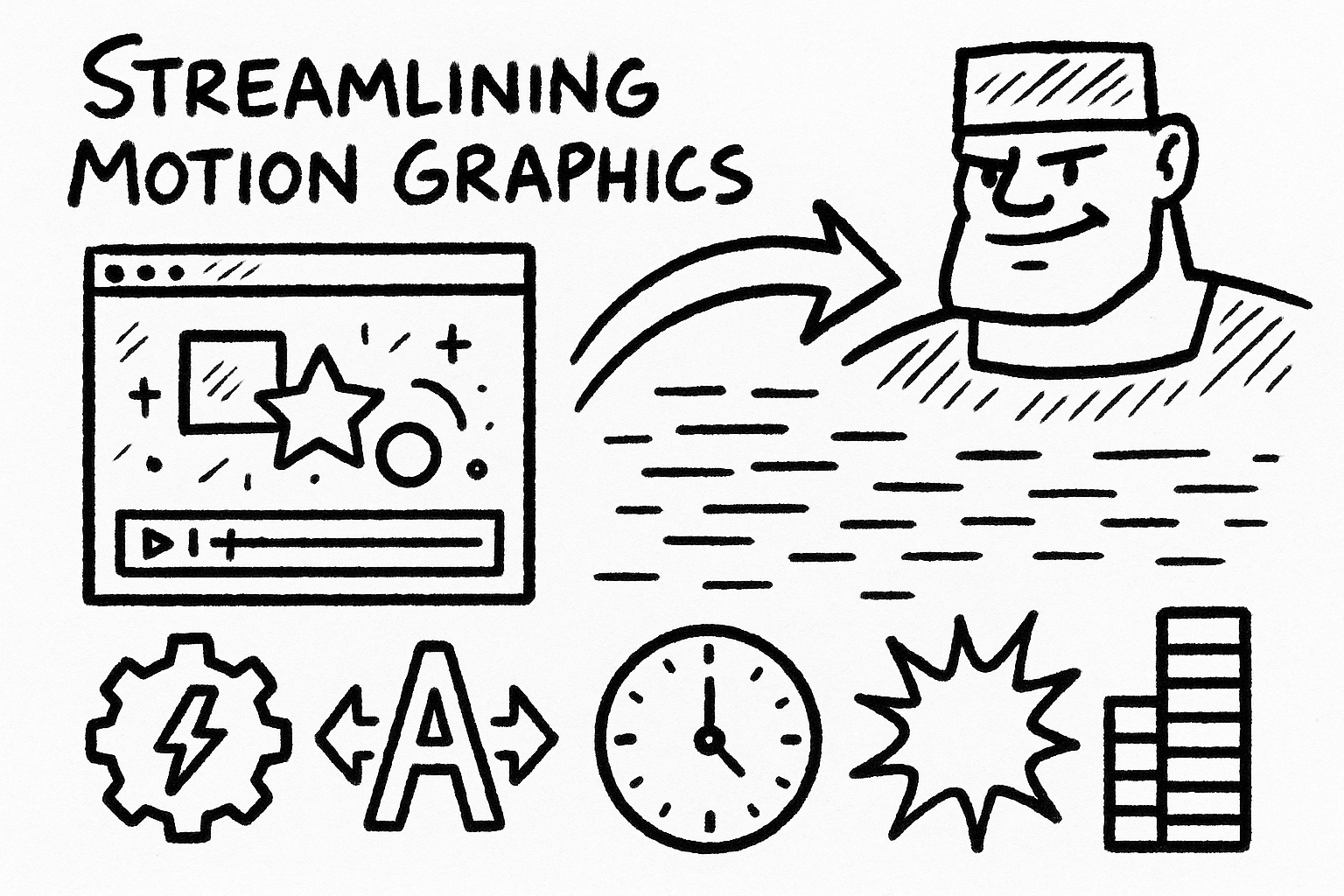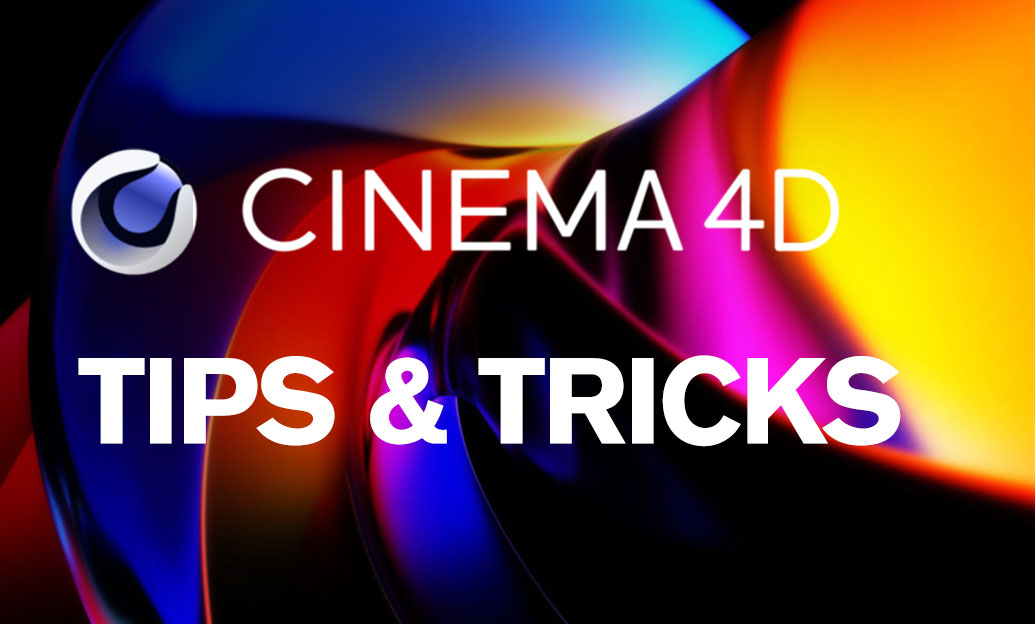Your Cart is Empty
Customer Testimonials
-
"Great customer service. The folks at Novedge were super helpful in navigating a somewhat complicated order including software upgrades and serial numbers in various stages of inactivity. They were friendly and helpful throughout the process.."
Ruben Ruckmark
"Quick & very helpful. We have been using Novedge for years and are very happy with their quick service when we need to make a purchase and excellent support resolving any issues."
Will Woodson
"Scott is the best. He reminds me about subscriptions dates, guides me in the correct direction for updates. He always responds promptly to me. He is literally the reason I continue to work with Novedge and will do so in the future."
Edward Mchugh
"Calvin Lok is “the man”. After my purchase of Sketchup 2021, he called me and provided step-by-step instructions to ease me through difficulties I was having with the setup of my new software."
Mike Borzage
Streamlining Motion Graphics: 5 Workflow Accelerators in Red Giant's Toolset
October 19, 2025 6 min read


Red Giant sits inside Maxon One as a consolidated toolkit designed to move motion-graphics artists from ideation to polished frames at unprecedented speed. The paragraphs that follow dissect five workflow accelerators embedded across Trapcode, Universe, Magic Bullet and the wider Maxon App ecosystem, exposing where precious minutes and even hours can be clawed back during production.
Centralized Ecosystem & Licensing Efficiency
Before a single keyframe is set, productivity is defined by how quickly the infrastructure around a project comes online. Maxon App functions as the command hub for every Red Giant installer, update and floating license, meaning studios no longer juggle disparate version trees or activation codes. A junior artist can image a fresh workstation, authenticate against the team’s license pool and be ready to composite in minutes instead of an afternoon devoted to IT escalation.
The same philosophy extends to interface design. Uniform UX conventions span Trapcode, Universe, Magic Bullet and VFX, allowing a colorist schooled in Magic Bullet Looks to pivot into Trapcode Particular without feeling as though they have switched software. Blend modes live in the same cursor distance from the preview, the same check-box logic governs GPU acceleration toggles, and the same right-click exposes reset or save-preset options across every panel. Cognitive friction drops, and with it the hidden time sink of context switching.
Red Giant Link completes the triangle by placing look files, particle setups and color grades on a cloud shelf that any authenticated teammate can reach. Rather than emailing zipped preset folders or hunting through shared drives, an art director drops a tweaked chroma-glow preset into Link, and it appears inside every remote workstation’s browser almost instantly. **Version mismatch headaches disappear**, and so does manual asset wrangling.
- Single installer, single sign-in: one executable manages the entire portfolio.
- Homogeneous UI paradigms: keystrokes and muscle memory transfer seamlessly between suites.
- Cloud-based preset distribution: creative intent stays intact across time zones and machines.
Procedural Particle & 3D Environment Generation
Once logistics are invisible, scene construction becomes the next bottleneck. Trapcode Particular, Form and Mir treat particles as malleable primitives that can be sculpted into fire, smoke, holographic data streams or fully volumetric terrains—yet they stay resident inside After Effects. By leaning on GPU physics, dynamic calculations are executed in real-time or near real-time, converting what used to be overnight render passes in external 3D software into desk-side iterations.
Traditional keyframe-driven explosions often require dozens of timelines controlling opacity, scale and velocity. Trapcode replaces that approach with parameterized behaviors. Toggle on fluid dynamics, dial in viscosity and buoyancy, and particle motion instantly swims and curls like real combusting gas. Flocking behaviors handle crowd simulations, turbulence fields inject chaos, and because every setting is animatable, an artist can automate complexity that would take hours of manual graph editing.
Integration of external geometry sweetens the deal. Custom emitters accept OBJ, Cinema 4D and even USD models, so logo meshes, character silhouettes or imported set pieces become the seed from which particles are born. The result is **true-to-scene integration**—particles inherit the silhouette of branded assets or trace the topology of a 3D landscape, matching perspective and depth cues without leaving the After Effects timeline.
Visual feedback is delivered through the dedicated Designer window. Instead of nudging numeric sliders, hitting “preview” and waiting, the Designer renders a live viewport that reflects every parameter tweak as it happens. The creative loop tightens: adjust physics, witness the influence instantly, and toggle color gradients inside the same space.
The net effect is that scene prototyping once reserved for specialized TDs now enters the hands of motion designers. A short turnaround commercial that demands smoke tracing across typography can be roughed in during a client call, not outsourced to a separate Houdini pipeline. The time saved compounds throughout the schedule: concept buy-in, iteration, final polish, all are compressed.
One-Click Stylization & GPU-Accelerated Transitions
When narrative pacing requires quick stylistic shifts, Universe delivers 90+ drag-and-drop effects built for editorial velocity. Each transition or generator—Glitch, VHS, Chromatic Aberration, Fractal Surf, you name it—auto-detects project resolution and frame rate, sparing editors the micro-task of tailoring presets for 4K vs HD timelines. **GPU compute via Metal, CUDA and OpenCL** means that what once needed offline rendering now plays back in near realtime, so directors can judge editorial rhythm without placeholder slugs.
Universe’s preset browser is deliberately visual. Hover over a thumbnail and it animates the effect using source footage, giving visceral proof of how scanlines or color warp will read on the current shot. Instead of surfing reference boards, an editor flicks through the category panel, assembles a look deck inside the host application and applies it instantly.
Two productivity multipliers surface when timelines grow chaotic:
- Stackable setups: multiple Universe effects can be layered and saved as a named favorite, creating bespoke toolchains—think Glitch plus VHS warmth plus noise wrap—that travel intact between Premiere Pro, After Effects and DaVinci Resolve.
- Host-agnostic presets: the same .univ file drags onto a node in Resolve or a clip in Premiere, ensuring style continuity across finishing environments.
The outcome is less about flashy presets and more about maintaining creative momentum. By collapsing experimental grading, retro texturing and signal-break artifacts into a one-click experience, Universe frees cognitive bandwidth for storytelling decisions.
Integrated Color, Finish & Grain Workflows
Magic Bullet consolidates what traditionally spanned LUT managers, beauty retouch plugins, denoisers and grain overlays. Inside Magic Bullet Looks, a single panel stacks film emulation LUTs, HSL secondary corrections, three-way wheels and optical diffusion filters as layered “tools.” Each tool is reorderable, keyframeable and can be toggled solo, making the grading pass both non-destructive and visibly intuitive in a node-free environment.
For portraiture-heavy motion graphics, Cosmo AI employs machine-learning skin-tone isolation. Set an approximate hue range and the algorithm refines the matte down to pores, allowing blemish softening or tonal knock-back without blurring eyelashes or hairline. Artists previously forced to hand-paint retouch masks now adjust two sliders and move on.
Denoiser III and Renoiser form a tandem operation: the first strips temporal noise via GPU processing while guarding edge fidelity; the second re-introduces procedural grain with adjustable size, roughness and chroma variance. Because both plugins share internal color-science, the added grain aligns with the cleaned plate’s tonal curves, preserving perceived sharpness across renders and deliverables.
Color scopes matter during final approval, and Magic Bullet routes directly into After Effects waveforms or Premiere Lumetri without an XML round-trip to a dedicated grading suite. The grade lives inside the same project file that handles typography and particle FX, shielding critical looks from mismatched export settings or LUT misapplications.
Hyper-Optimized Rendering & Collaboration
The most powerful effects lose value if they choke at final output. Red Giant’s latest builds hook into After Effects Multi-Frame Rendering, parsing compositions across every available CPU core. A 16-core workstation once limited by the old single-thread model can now harvest all its silicon, shrinking overnight renders to coffee-break length.
Smart prerender checkpoints guard against catastrophic failure. Heavy Trapcode simulations write intermediate caches to disk so that if GPU memory spikes or a power glitch occurs, the render resumes from the last intact frame rather than frame 0. Over a campaign’s lifetime, those salvaged hours pay massive dividends.
For teams hybridizing 2D and 3D, a Redshift-enabled Cinema 4D exchange funnels camera, light and material data out of After Effects and back again. Particle passes composited against Cinema 4D renders maintain matching reflections and shadows, and any relighting adjustments in C4D ripple through without re-matching by eye.
Color management unifies collaboration even further. Every Red Giant effect embeds OpenColorIO and ACES compliance, so the particle layer graded in sRGB and the client’s log-encoded Alexa plate float through the same nonlinear gamut pipeline. The deliverable conforms to broadcast specs without LUT gymnastics, lowering risk during frantic deadlines.
Put succinctly, render optimization intersects deeply with collaboration. Faster frames mean faster approvals, and standardized color pipelines mean fewer surprises in the online suite.
Consider these cumulative advantages:
• Multi-Frame Rendering exploits modern CPUs.
• Checkpointing secures long simulations.
• Redshift exchange keeps look integrity intact across dimensional borders.
Conclusion
By merging installation, licensing, procedural generation, stylization, color finishing and render optimization into a single umbrella, **Red Giant collapses traditionally siloed tasks** into one cohesive pipeline. Ideation no longer waits for IT provisioning, style exploration no longer stalls on playback lag, and finishing no longer fragments across separate applications. Motion-graphics artists who audit their current toolchain against these five accelerators routinely surface double-digit percentage savings in man-hours while expanding the creative headroom that ultimately differentiates their work. The invitation is simple: benchmark your next project with Red Giant fully leveraged and measure how quickly concept transforms into client-ready motion.
Also in Design News

Rhino 3D Tip: Optimizing Rendered Viewport Settings in Rhino 3D for Enhanced Visualization and Performance
October 19, 2025 3 min read
Read More
Unleashing Enscape: 5 Hidden Features to Revolutionize Design Workflows
October 19, 2025 6 min read
Read More
Cinema 4D Tip: Enhancing Skin Realism in Cinema 4D with Bump and Normal Maps
October 19, 2025 3 min read
Read MoreSubscribe
Sign up to get the latest on sales, new releases and more …


